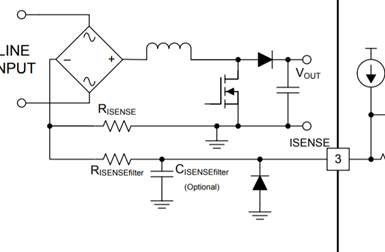Other Parts Discussed in Thread: PMP20612, LM8364
Can anyone tell me if the addition of the diode across the inductor and boost diode would take care of the issue of no overcurrent protection?
I am experiencing the same issue that when I turn off the AC input, and turn it back on again, the current sense resistors incinerate and mosfet shorts.
If I wait for high voltage to drain off, then circuit powers up fine.
In reference to the datasheet for the UCC228180 (SLUSBQ5D-NOV 2013), Figure 29 shows the diode D2 as part of the reference design.
What is the function of this diode?
Any information would be greatly appreciated.



